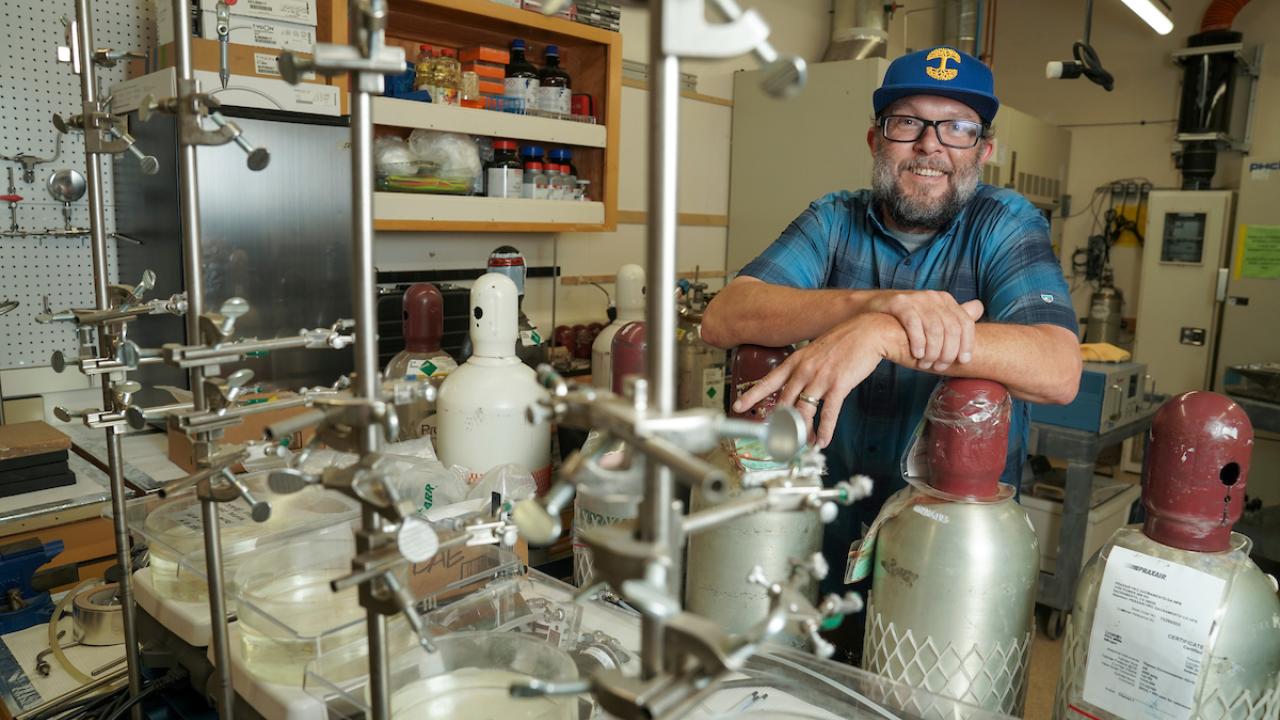The realities of climate change are around us — replete with the sight of melting glaciers and raging wildfires. Scientists have long documented that greenhouse gas emissions are the most significant drivers of global warming and climate change. Fossil fuels such as coal, oil and gas account for over 75% of global greenhouse gas emissions and nearly 90% of all carbon dioxide emissions. The impact of these gasses has long-term implications for human health — affecting the lungs, heart, blood and the brain.
Keith Bein, a professional researcher at the Air Quality Research Center (AQRC) and a research professor at the Center for Health and the Environment works at this very intersection of climate change, air pollution and health. For decades, he has been investigating different sources of air pollution, including vehicular emissions, wildfires, power plants and other industrial activities in California’s Central Valley and Imperial Valley.
One potential solution to reduce emissions or atmospheric concentrations of CO2 — the primary greenhouse gas –– is to find ways to capture carbon from the atmosphere and store it.
Bein, together with a team of scientists, has developed new phosphoenol derivatives that can capture carbon dioxide from the atmosphere, or industrial sources such as power plants, before it enters the atmosphere. According to the scientists, these derivatives will contain no nitrogen and will be less energy intensive than the current solvents for carbon capture.
Mimicking carbon capture of C4 plants
The scientists’ carbon capture and storage idea gained its roots in a tour that Wexler took of local plants in Saudi Arabia around nine years ago. During the tour, the team made an interesting observation that a particular kind of plant –– called a C4 plant –– has evolved to conduct photosynthesis in a peculiar way due to the arid climate of the region.
C4 plants fix carbon dioxide into a four-carbon atom compound. They then use phosphoenolpyruvate to capture CO2 at night from the atmosphere and then release it during the day for photosynthesis. Inspired by this process, the UC Davis researchers developed new phosphoenol derivatives that can capture carbon dioxide from industrial sources such as power plants before it enters the atmosphere, or directly from the atmosphere itself.
Capturing carbon from power plants and the air
“Essentially, this plant was doing carbon capture, and we thought, perhaps we can mimic that process for removing carbon from point sources like the coal-fired power plants, natural gas-fired power plants by retrofitting something on their smokestacks to catch that CO2, and then store it in some kind of geological formations before it gets released to the atmosphere,” said Bein. “We’re trying to mimic the compound in these C4 plants that is capturing the CO2 through this chemical reaction. But then we are trying to modify that chemical so that it has the properties that we want.”
“With direct-air capture, carbon dioxide is directly pulled from the atmosphere and removed."
The goal is to reinvent the compound that goes into this industrial scale apparatus to capture the carbon. The researchers also thought of a newer idea that can directly capture carbon from the atmosphere itself.
“With direct-air capture, carbon dioxide is directly pulled from the atmosphere and removed,” Bein said. “The compounds used will not be lost to the atmosphere or react to form toxic compounds. The major difference here is that CO2 emitted from an industrial source is very concentrated. When it’s removed from the atmosphere, it gets very, very dilute, and these can be wildly different situations, thermodynamically and kinetically. But similar compounds and processes can be used to do the job for either.”
Benefits of the technology
As important as it is to phase out fossil fuels to reach the goals of a zero carbon future, recent energy studies show how carbon capture and storage could also be a necessary component of that path forward.
The technology is still under development, with patent pending, but Bein is excited about its potential applications. If the technology accelerates in the future, industries with major CO2 emissions, natural gas processing, fossil fuel-based hydrogen production plants, synthetic fuel plants could produce fewer emissions.
Bein, who studies the long-term effects of continued exposure to wildfire emissions, is concerned about forest fires which are increasing in size, duration and frequency. In 2020, wildfires surpassed all other sources of CO2 in California’s atmosphere.
“It would be nice to have some kind of geoengineering where we could actually remove the CO2 produced by these wildfires out of the atmosphere, sequester it and store it somewhere so that we're not feeling the effects of the heat-trapping greenhouse gasses,” said Bein.
In addition to Bein, co-inventors of the technology include Anthony Wexler, director of the AQRC, one of the organized research units with the Office of Research, Rolland Faller, now the Dean of the College of Engineering at Texas Tech University and Yihan Huang, a former doctoral researcher in materials science. The work has been funded by the Electric Power Research Institute and California Energy Commission.
Media Resources
Kat Kerlin, UC Davis News and Media Relations, 530-750-9195, kekerlin@ucdavis.edu
